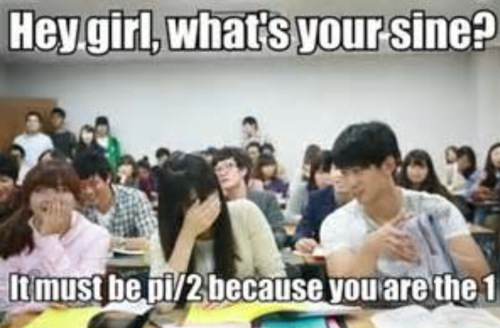
Trigonometric graphs (domains, ranges sin,cos,tan,arctan,arcsin,arccos,cosec,sec,cot)
Keywords
[table][br][br][tr][br][td]Trigonometric graphs[/td][br][td]三角関数のグラフ[/td][br][td]삼각함수 그래프[/td][br][td]三角函数图[/td][br][/tr][br][tr][br][td]Domains and ranges[/td][br][td]定義域及び値域[/td][br][td]정의역 및 치역[/td][br][td]定义域和值域[/td][br][/tr][br][tr][br][td]Sine[/td][br][td]サイン[/td][br][td]사인[/td][br][td]正弦[/td][br][/tr][br][tr][br][td]Cosine[/td][br][td]コサイン[/td][br][td]코사인[/td][br][td]余弦[/td][br][/tr][br][tr][br][td]Tangent[/td][br][td]タンジェント[/td][br][td]탄젠트[/td][br][td]正切[/td][br][/tr][br][tr][br][td]Arcsin[/td][br][td]アークサイン[/td][br][td]아크사인[/td][br][td]反正弦[/td][br][/tr][br][tr][br][td]Arccos[/td][br][td]アークコサイン[/td][br][td]아크코사인[/td][br][td]反余弦[/td][br][/tr][br][tr][br][td]Arctan[/td][br][td]アークタンジェント[/td][br][td]아크탄젠트[/td][br][td]反正切[/td][br][/tr][br][tr][br][td]Cosec[/td][br][td]コセカント[/td][br][td]코시컨트[/td][br][td]余割[/td][br][/tr][br][tr][br][td]Sec[/td][br][td]セカント[/td][br][td]시컨트[/td][br][td]正割[/td][br][/tr][br][tr][br][td]Cot[/td][br][td]コタンジェント[/td][br][td]코탄젠트[/td][br][td]余切[/td][br][/tr][br][tr][br][td]Periodic nature[/td][br][td]周期性[/td][br][td]주기성[/td][br][td]周期性[/td][br][/tr][br][tr][br][td]Inverse trigonometric functions[/td][br][td]逆三角関数[/td][br][td]역삼각함수[/td][br][td]反三角函数[/td][br][/tr][br][/table][br]

[table][br][tr][br][td][b]Factual Questions[/b][/td][br][td][b]Conceptual Questions[/b][/td][br][td][b]Debatable Questions[/b][/td][br][/tr][br][tr][br][td]What are the domains and ranges of the sine, cosine, and tangent functions?[/td][br][td]Why do inverse trigonometric functions have restricted domains?[/td][br][td]How can the limitations of trigonometric functions in complex scenarios impact their practical application in fields like engineering?[/td][br][/tr][br][tr][br][td]How does the periodic nature of sine and cosine relate to their graphs?[/td][br][td]In what ways do the domains and ranges of trigonometric functions reflect their applications in real-world scenarios?[/td][br][td]Is the traditional teaching method of trigonometric functions adequate for students to appreciate their practical applications?[/td][br][/tr][br][tr][br][td]How are trigonometric functions used in real-world scenarios, such as in engineering or navigation?[/td][br][td]How do the properties of trigonometric graphs assist in understanding the behavior of periodic phenomena?[/td][br][td]Should the focus of education on trigonometry be shifted more towards its computational aspects rather than its theoretical underpinnings?[/td][br][/tr][br][/table][br]
The Festival of Trig functions
Scenario: The Festival of Functions[br][br]Background:[br]The land of Mathematica is having its annual Festival of Functions, a celebration where the citizens revel in the beauty and utility of mathematical functions. This year's theme is the mesmerizing world of trigonometry, featuring the sine, cosine, tangent, and their inverse functions.[br][br]Objective:[br]As a Mathemagician-in-training, your challenge is to master the graphs of these trigonometric functions, understand their domains and ranges, and use this knowledge to amaze the festival-goers.[br][br]Investigation Steps:[br][br]1. Unraveling the Sine and Cosine:[br] - Begin by exploring the periodic nature of the sine and cosine functions.[br] - Identify the domain and range of these functions and explain their significance.[br][br]2. Tackling the Tangent and Cotangent:[br] - Investigate how the tangent function differs from sine and cosine in terms of its graph, domain, and range.[br] - Do the same for the cotangent function and discuss its unique properties.[br][br]3. Discovering the Arcs and Inverses:[br] - Delve into the world of inverse trigonometric functions, starting with arcsin and arccos.[br] - Understand their restricted domains and ranges to ensure they are functions.[br][br]4. Applying Knowledge at the Festival:[br] - Use your understanding to create interactive displays that help visitors visualize these functions and their importance.[br][br]Questions for Investigation:[br][br]1. Discovery Question:[br] - Why do inverse trigonometric functions have restricted domains, and how do these restrictions affect their graphs?[br][br]2. Practical Applications:[br] - How are trigonometric functions used in real-world scenarios, such as engineering or navigation?[br][br]3. Festival Challenges:[br] - Can you design a game for the festival that involves estimating angles using trigonometric functions?[br][br]4. Reflection:[br] - Reflect on how the symmetry of the sine and cosine functions is represented in their graphs.[br]
